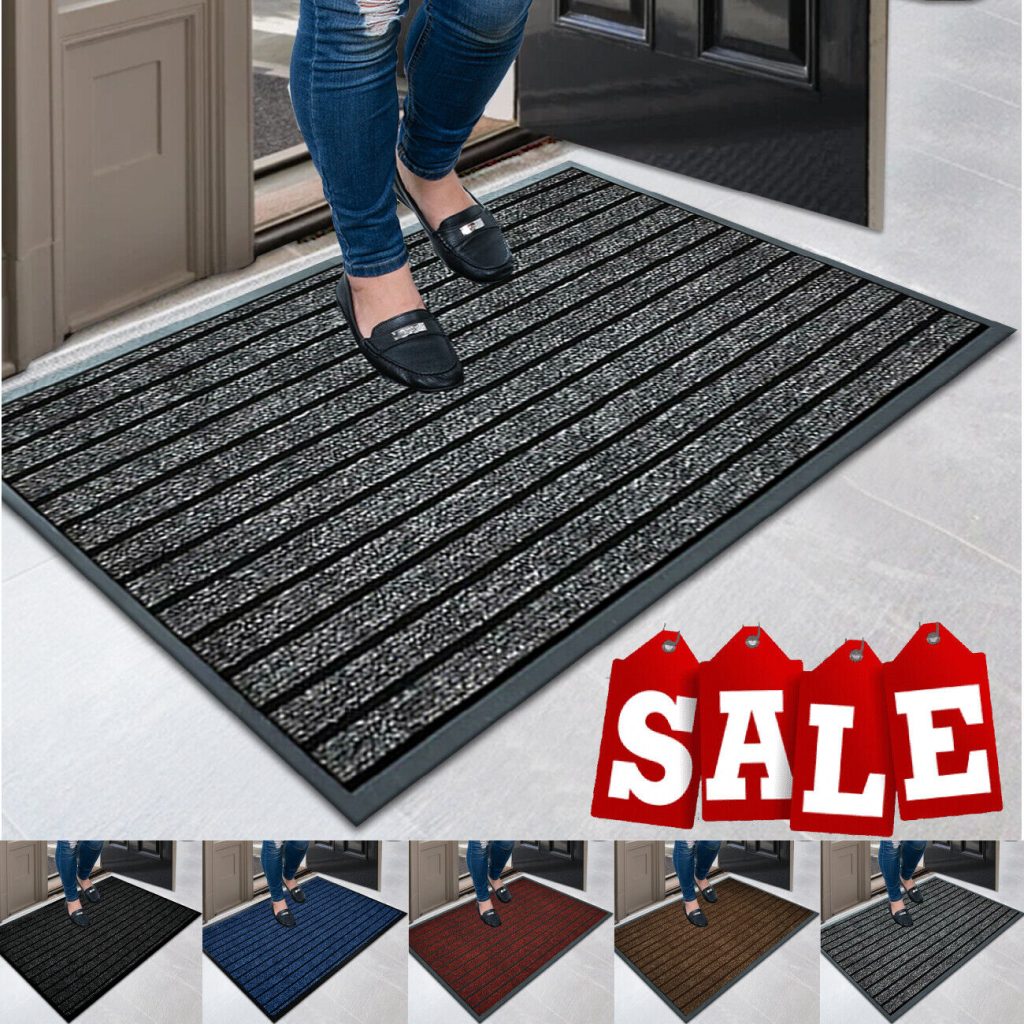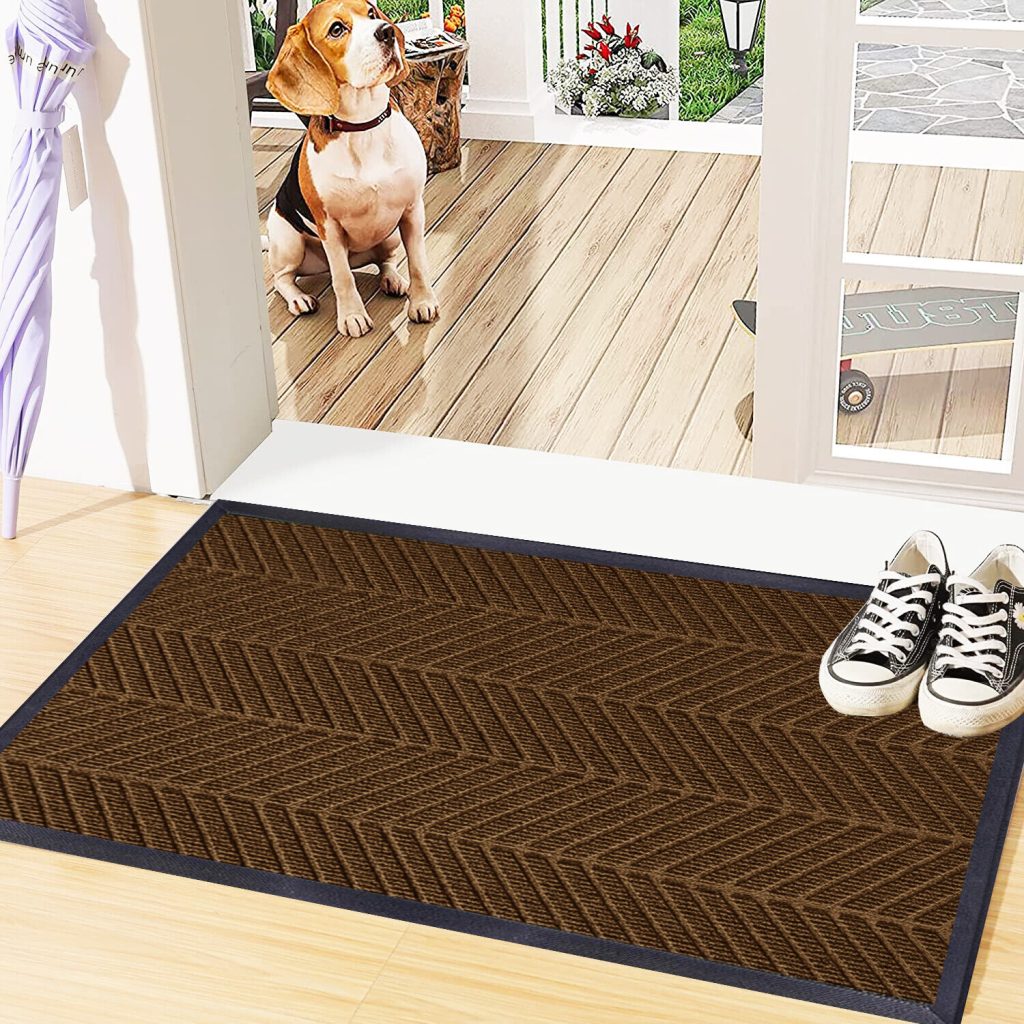In the UK’s often wet and muddy climate, a stain-resistant doormat is an essential home accessory that helps maintain cleanliness and protect your interior floors. These mats serve as the first line of defence, trapping mud, dirt, and moisture before they enter your living spaces. This benefit is particularly significant during rainy seasons or after outdoor activities when footwear commonly carries mud and grit. By efficiently capturing debris, stain-resistant doormats prevent unsightly marks and potential damage to flooring – especially sensitive surfaces like hardwood, laminate, and carpets.
Understanding the Benefits of Stain-Resistant Doormats for Muddy UK Entrances
Another major advantage is the reduction in cleaning time. With less dirt tracked indoors, you spend less time scrubbing floors and cleaning rugs, which prolongs their lifespan. High-quality stain-resistant mats also improve the overall appeal of your home entrance. They provide a neat, welcoming aesthetic that can complement a variety of interior styles while being practical enough to withstand heavy use. In short, investing in a stain-resistant doormat tailored to UK conditions keeps your home cleaner, more attractive, and easier to maintain year-round.
Key Materials and Technologies Behind Effective Stain-Resistant Doormats
Several materials and technologies contribute to the effectiveness of stain-resistant doormats, especially suited for muddy UK entrances:
- Synthetic Fibres (Polypropylene, Nylon): Known for their water and stain-repellent properties, synthetic fibres are durable, quick-drying, and easy to clean. They resist mould and mildew, making them ideal for wet conditions. Their tightly woven construction often prevents mud from embedding into the fibres.
- Coir: Derived from coconut husks, coir mats are naturally abrasion-resistant and excellent for scraping mud off shoes. While more porous than synthetic mats, treatments can enhance their stain resistance. Coir mats are also eco-friendly and bring a rustic, natural look to your entrance.
- WaterHog Luxe: A premium brand known for advanced water-absorbing fibres combined with durable backing that keeps moisture locked in and prevents staining. WaterHog mats effectively trap dirt and dry quickly, making them a top choice for high-traffic, muddy areas.
- Lobster Rope: This innovative material uses twisted polypropylene ropes, designed to scrape and absorb dirt effectively. Lobster Rope mats dry rapidly and resist staining from muddy conditions by preventing soil from sinking deep into the fibres.
Additional treatments like stain-resistant coatings and anti-microbial finishes further enhance durability. These technologies reduce the adhesion of mud and grime, allowing dirt to be cleaned easily without damaging the mat’s fibres. Combining these materials and technologies ensures your doormat provides long-term protection and maintains its appearance despite challenging outdoor conditions.
Choosing the Right Stain-Resistant Doormat for Your UK Home
Selecting the perfect stain-resistant doormat involves considering several practical factors to meet your home’s needs:
- Entrance Size: Measure your doorway to choose an appropriately sized mat that covers enough surface for effective scraping and drying footwear, without blocking door movement.
- Foot Traffic: For homes with frequent visitors or pets, tougher materials like synthetic fibres or WaterHog are ideal for heavy-duty use. For lower traffic entrances, coir or Lobster Rope may suffice.
- Weather Exposure: If your doormat is fully outdoors and exposed to rain and mud, opt for mats with waterproof backing and fast-drying properties. Indoor mats in covered porches can prioritise aesthetic and comfort while still offering stain resistance.
- Aesthetic Preferences: Doormats come in various colours, patterns, and textures. Consider coordinating your mat with your entrance décor—for example, natural coir for a traditional style or sleek synthetic mats for a modern look.
- Safety: Ensure your chosen mat has an anti-slip backing compatible with your flooring to prevent slips and trips when wet.
By balancing functionality with style, you can find a stain-resistant doormat that keeps muddy footwear contained while complementing your home’s entrance.
Cleaning and Maintaining Your Stain-Resistant Doormat for Maximum Longevity
Proper cleaning and maintenance are key to preserving your doormat’s stain-resistant properties and extending its lifespan. Follow these steps for best results:
- Regular Shaking and Beating: Remove the mat regularly (at least once a week) and shake or beat it outdoors to dislodge trapped mud and debris.
- Vacuuming: Use a vacuum cleaner on the front and back sides to pick up dirt embedded in fibres. This prevents dirt build-up that causes permanent stains.
- Spot Cleaning: For stains, use mild detergent mixed with water and gently scrub the affected area with a soft brush. Avoid harsh chemicals or bleach, which can degrade fibres or coatings.
- Hosing Down Outdoor Mats: Synthetic or Lobster Rope mats can be rinsed outdoors with a hose. Allow mats to dry completely before placing them back to prevent mildew.
- Drying: Always air dry your mat in a well-ventilated area, avoiding direct sunlight for natural materials like coir, which can fade or degrade.
- Frequency: Depending on foot traffic and climate, deep cleaning should be done monthly during wet seasons, less often during dry periods.
Avoid machine washing (unless specified by the manufacturer) and do not use harsh solvents. Following these routines will maintain your mat’s stain resistance, appearance, and protective functionality year after year.
Comparing Top Stain-Resistant Doormat Options Available in 2025
| Doormat Type | Material | Stain Resistance | Waterproof | Size Range | Price Range |
|---|---|---|---|---|---|
| WaterHog Luxe | Advanced synthetic fibres | High | Yes | 60×90 cm to 90×150 cm | £40 – £80 |
| Lobster Rope | Twisted polypropylene ropes | Medium-High | Yes | 60×90 cm to 90×120 cm | £35 – £70 |
| Coir (Treated) | Natural coconut fibre | Medium | No | 45×75 cm to 75×120 cm | £20 – £50 |
| Polypropylene Mats | Polypropylene fibres | High | Yes | 50×80 cm to 85×140 cm | £15 – £45 |
| Nylon Fabric Mats | Nylon fibres | High | Some models | 55×85 cm to 80×140 cm | £25 – £60 |
This comparison highlights the variety available for UK homes in 2025. WaterHog Luxe excels in high-traffic, wet entrances, while Lobster Rope offers innovative scrape-and-drain features. Treated coir provides an eco-friendly, natural option but is less waterproof. Synthetic mats balance affordability with top stain and water resistance. Choose based on your specific needs for durability, style, and pricing.
Styling Tips: Enhancing Your Entrance Area with Practical Doormats
A stain-resistant doormat doesn’t have to compromise on style. Use these tips to elevate your entrance décor while keeping mud contained:
- Layer Mats: Combine a sturdy scrape mat (like Lobster Rope) outside with an absorbent WaterHog inside. This layered approach increases dirt trapping and adds texture interest.
- Colour Coordination: Choose mats in colours complementary to your door and interior furnishings. Neutral tones like grey, beige, or charcoal blend easily, while bold colours can add character.
- Add Accessories: Incorporate stylish umbrella stands, shoe racks, or potted plants near your mat to create an organised, welcoming mud-free zone.
- Shape Variation: Round or patterned mats can soften a rectangular doorway space, creating a visually appealing entrance.
- Personalise: Custom or monogrammed mats with waterproof inks add personality while maintaining stain resistance.
Integrating stain-resistant mats thoughtfully maintains a clean environment without sacrificing your home’s design aesthetic.
Frequently Asked Questions About Stain-Resistant Doormats
Q: Are synthetic mats better than natural fibres for mud?
Synthetic mats usually outperform natural fibre mats like coir for mud resistance because they repel water and dry faster. However, treated coir can still be effective and offers a natural look.
Q: How often should I replace my doormat?
Typically, replace your doormat every 1-3 years, depending on usage and wear. Signs include fraying, diminished scraping ability, or persistent staining despite cleaning.
Q: What is the best way to prevent stains from setting in?
Regular cleaning prevents dirt build-up and staining. Shake out debris frequently and clean spots immediately using mild detergent. Avoid letting mud dry into fibres.
Q: Can I use bleach to clean my doormat?
No, bleach can damage the fibres and stain-resistant treatments. Use gentle soap or specialised mat cleaners instead.
Q: Do stain-resistant mats work outdoors in all weather?
Yes, especially those with waterproof backing and quick-dry fibres. For uncovered entrances, opt for synthetic or Lobster Rope mats designed for wet conditions.
For expert advice on purchasing and caring for stain-resistant mats that suit your UK home, consider browsing our extensive collection of stain-resistant doormats at RugStars, where durability meets style perfectly for your entrance needs.



